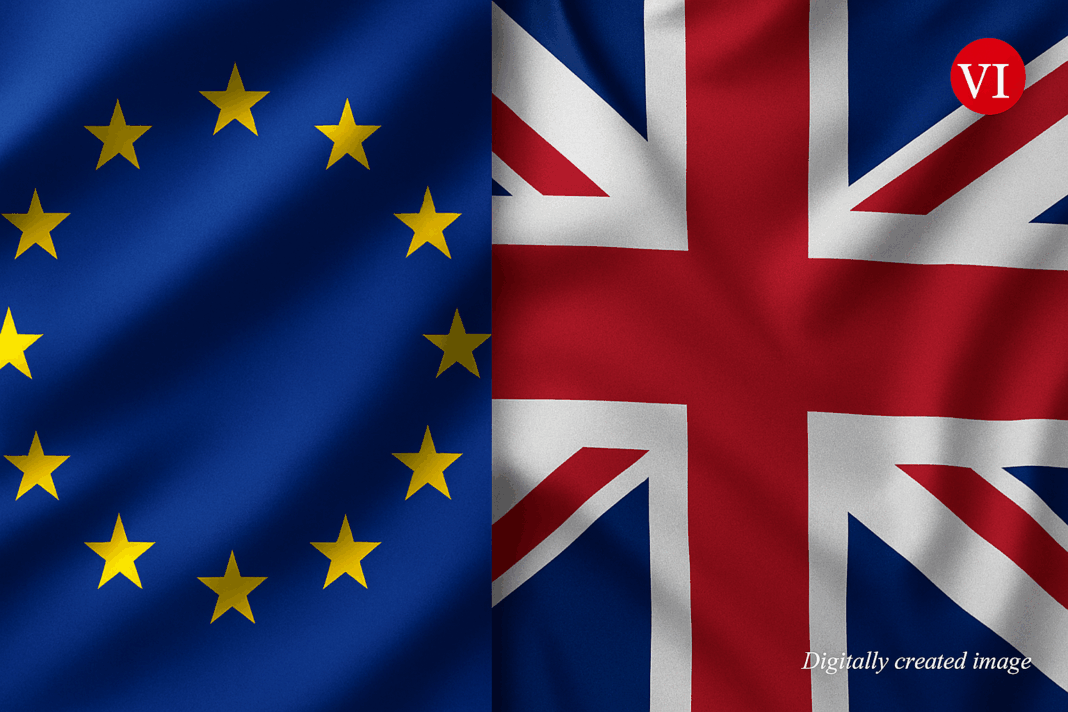A comparative look at how Britain’s post-Brexit defence ties stack up against Canada’s and Norway’s EU security partnerships.
• EU has signed new Security and Defence Partnerships (SDPs) with the UK, Canada, and Norway.
• The UK’s agreement includes deeper political ties but cautious institutional language.
• Brexit’s legacy still shapes the tone and scope of UK-EU defence cooperation.
The Big Picture
In less than two years, the European Union has struck formal Security and Defence Partnerships (SDPs) with key non-EU NATO allies: the United Kingdom, Canada, and Norway. These agreements are part of a broader EU strategy to diversify its security architecture amid growing uncertainty around U.S. commitments. They also create new channels for trusted partners to engage with EU defence initiatives, including joint procurement and structured cooperation frameworks under the €150 billion SAFE (Security Action For Europe) plan.
At a glance, the SDPs appear structurally similar—but a closer comparison reveals distinct ambitions and constraints for each country, particularly for the UK, where post-Brexit politics still cast a long shadow.
According to the official UK-EU “Common Understanding” released during the May 2025 summit, both sides committed to deepening cooperation on defence, Ukraine support, crisis response, cyber resilience, and strategic consultations across multiple fronts, including maritime security, military mobility, and health security.1 The SDP forms a pillar within this broader bilateral reset, reaffirming the UK’s alignment with key EU objectives even outside the bloc.
What’s New in the UK Deal
The EU-UK SDP, signed during a May 2025 summit as part of a diplomatic reset, includes structured dialogues at both working and high political levels. Unlike the agreements with Norway and Canada, the UK deal includes biannual foreign and security policy meetings with the EU High Representative and the UK’s Foreign and Defence Secretaries—demonstrating high-level intent to reengage politically.
Moreover, the UK agreement extends beyond conventional defence priorities to include new issue areas such as illicit finance, corruption, migration, health security, and regional security exchanges covering the Indo-Pacific and Western Balkans. This broader scope sets it apart as the most comprehensive among the three partnerships.
How It Compares
Canada’s agreement, signed in June 2025, is technically the most detailed and longest—but that may reflect the EU’s institutional learning curve more than a deeper bilateral relationship. Norway, a long-standing EEA member with existing ties to EU defence structures, signed a more concise agreement in 2024 that is nevertheless the deepest in terms of operational integration.
The UK’s SDP strikes a balance—ambitious in vision but tentative in institutional commitment. It avoids strong language around participation in missions under the EU’s Common Security and Defence Policy (CSDP) and makes only modest gestures toward instruments like the European Peace Facility or new PESCO projects.
What They’re Saying
Flach and von Ondarza note that while all three partnerships lack mutual security guarantees, they provide like-minded partners with gateways to engage in the EU’s growing defence and industrial ecosystem. In the case of the UK, it may even reopen doors once thought closed after Brexit.
Strategic Takeaway
Despite its cautious tone, the UK-EU SDP is politically significant. It signals a willingness to reconnect, albeit on carefully negotiated terms. The fact that it includes more issue-specific areas than those with Norway or Canada suggests the UK’s desire to remain relevant in Europe’s security landscape—without fully returning to pre-Brexit institutional frameworks.
Ultimately, the SDP provides structure, not guarantees. But in a time of global instability, even structure is strategic. Together, these agreements simplify and formalize the EU’s complex defence relationships—making the continent’s security web a little less tangled, and a little more inclusive.
Trump-Putin Ceasefire Meeting: What We Know
Modi Defends Farmers as Trump Tariffs Hit India
This article includes insights based on research published by UK in a Changing Europe. Original analysis by Johanna Flach and Dr. Nicolai von Ondarza.
1. Source: UK-EU Summit – Common Understanding (19 May 2025)
Follow Virginia Times for regular news updates. Stay informed with the latest headlines, breaking stories, and in-depth reporting from around the world.
A global media for the latest news, entertainment, music fashion, and more.















